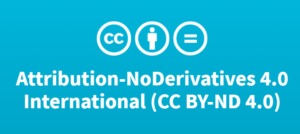It’s with great pleasure that I’m chairing the 74th Tobacco Science and Research Conference (TSRC), a hybrid event taking place both virtually and in Boston, Massachusetts, US.
Boston, of course, is a city with a storied history of being involved in – and tackling – major societal issues: the prohibition of alcohol between 1920-33 being one of them. Today, it has a problem solving and forward-thinking mindset, ideal for creating innovative solutions for more current challenges.
And the theme of this year’s TSRC is tobacco harm reduction (THR) – or rather the threats facing tobacco harm reduction, and the ensuing potential prohibition of the widespread adoption of non-combustible nicotine products (or Next Generation Products, NGPs) as a potentially less harmful alternative to combustible cigarettes by adult smokers.

Imperial Brands is hosting the 74th TSRC.
In the context of an increasingly regulated – yet fragmented – global environment for THR, one of TSRC’s key messages this year is for a united call for public health bodies and legislators to follow the science, and for data to drive regulation towards wider acceptance of NGPs as a potential harm reduction tool for adult smokers who would otherwise continue smoking.
The breadth and depth of NGP research that has taken, and is taking, place is exemplary of the efforts being made, both by industry and beyond, to bolster our existing foundation of supporting evidence.
This stream of peer-reviewed data, allied to a transparent collaborative approach, will surely enable us to better engage with sceptical stakeholders. And perhaps also with a wider public who – understandably given the wealth of conflicting information floating around – has yet to embrace THR and NGPs in the same way as millions of former adult smokers.
After all, THR cannot and will not reach its full potential without every contributing factor being considered.
Take the THR equation (below) itself. It considers the science. It considers the consumer. But it doesn’t consider the role of societal acceptance, or the role of regulatory frameworks in maximising THR. Only if these four key elements work in unison can population-level THR be considered a realistic possibility.

50 years of harm reduction
THR isn’t a new concept and has been around since the 1970s. Previously though, the climate – including older, ineffective technologies, a dearth of supporting scientific data, nascent regulatory frameworks plus a lack of consumer demand from adult smokers who still enjoyed a (grudging) social acceptance of their habit – simply wasn’t right for it to prosper.
Half a century on, the situation is much changed.
The NGPs themselves must first and foremost be good enough for the consumer to want to choose them as an alternative to smoking. We are currently in the strongest position we have ever been, as an industry, to present technologies that fulfil this remit.

Research is providing viable alternatives to combustible cigarettes. Image: Imperial Brands
Take vaping, for instance, where nicotine salts have innovated an improved blood nicotine uptake compared to traditional freebase e-liquids. A good portion of adult smokers prefer the cigarette-like nicotine satisfaction nic salts deliver. Nevertheless, a large amount of French vapers in one study still preferred a lower nicotine content in a freebase liquid form, which results in a different sensorial effect.
This illustrates that to fulfil THR a broad variety of products should be offered in order to satisfy the differing needs of adult smokers.
Focusing on the science, it is my firm belief that there now exists substantial amounts of evidence – in fields ranging from population health and product characterisation to biological, clinical and perception and behavioural science – to support the significant THR potential of NGPs. This continuing substantiation helps build confidence.
The third factor is the role of the regulator as a leader to ensure that the right regulatory environment prevails to build trust. Many, however, remain highly sceptical or even outright opposed to THR. In the US, a legal framework now exists for products to be authorised for marketing based on, amongst other things, a comprehensive scientific substantiation package. However, globally more progress is necessary to ensure the right legislative structures are in place to fairly analyse product data and inform regulatory authorisations.
Pressure points
Perhaps the most significant outstanding challenge for THR stems from a requirement for societal acceptance , particularly from public health leadership. There is an increasing societal pressure for adult smokers to quit smoking and for non-smokers not to start smoking, but key public health bodies – most notably the World Health Organisation – are inconsistent, even hostile, in their messaging towards THR and NGPs.
This leads to confusion among both adult smokers and the general public: it’s both unsurprising and disillusioning to learn they often don’t know who or what to believe or trust when it comes to NGPs. Public Health England’s consistent support of vaping as a significantly harm reduced alternative to combustible cigarettes, alongside their clear guidance decoupling the EVALI crisis from conventional nicotine vaping, are notable examples of strong, scientifically-informed leadership clearly informing potentially better public health outcomes.

Imperial Brands partnered with many key industry players to host the 74th TSRC event.
While the lack of THR support from some public health bodies and regulators is an admittedly muddied situation, the actual solution is crystal clear: science – not politics – is king and it is data that needs to inform and drive future regulatory leadership, discourse and direction.
In a time when some scientific conferences are sadly and frustratingly closing their doors on the contribution the tobacco industry can make to THR and NGPs, scientific forums like TSRC – where industry and regulators come together to present, share and discuss the latest data – are therefore more invaluable than ever.
I hope all attendees enjoy the conference.
—
Click links to see the TRSC conference Abstracts and Programme (pdf).
—
You are free to share this content with credit to Imperial Brands under a Attribution-NoDerivatives 4.0 International (CC BY-ND 4.0) license.
